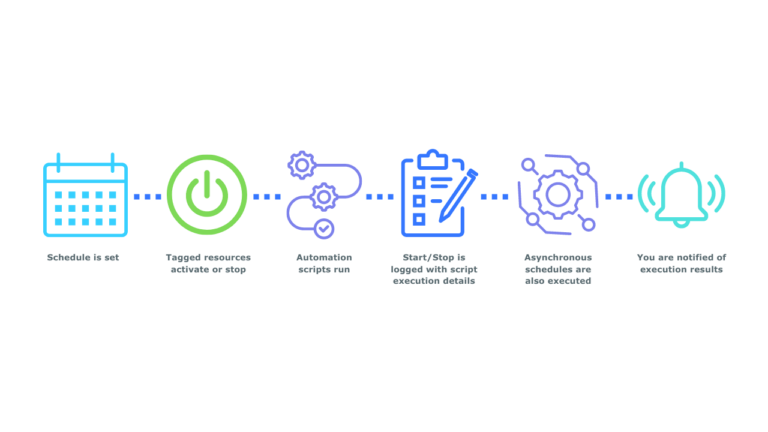In the Cloud, the pay-as-you-go model reigns supreme. Your resources, such as EC2 and RDS, are only charged to your account for the amount time they’re in use. Whilst your lower environments only use their resources during business hours, the production environment typically requires resources to be available 24/7. As a result of the need for resources, costs can accumulate quickly due to the amount of unused resources running in the background.
To optimise running costs, AWS provides an in-house tool called Instance Scheduler, which allows for the automatic start and stop of EC2 and RDS instances based on custom schedules. A tagging system identifies applicable resources, as well as which user-defined schedule to run from.
Instance Scheduler is a generic solution, with limited flexibility and little customisability. It only allows instance-level shutdowns for EC2 and RDS instances, without any particular order, and works entirely off time-based scheduling. This means it does not work as well when your instances are interdependent and require ordered starts and stops.
How can Autosnoozer help you?
Cloud Elemental’s Autosnoozer was designed to amend the pitfalls of Instance Scheduler, whilst retaining the benefits.
Autosnoozer’s powerful automation features instantly resolves the high costs of constantly running compute resources, making operational overheads minimal. By allowing for a range of schedule customisations, Autosnoozer allows your organisation to engage your resources specifically when your workload actually needs them.
Alongside automated starts and stops, Autosnoozer also has a range of other beneficial features, such as sequential script execution on EC2 instances. This allows for application-level starts and stops, and even opens up the ability to control the order of these deployments.

You can also reinforce dependencies as a result of Autosnoozer. It’s inherent event-driven architecture allows for the asynchronous chaining of events – meaning that you can execute your resources sequentially, simultaneously, or even both. You have full control over the order in which each instance, service and workflow activates, and due to the uncoupled nature of Autosnoozer, these custom schedules are simplistic to configure. For increased reliability, if a failure occurs when shutting down a resource, the other computation resources remain unaffected.
It is also notable that Autosnoozer has a wider scope than Instance Scheduler, allowing for automations to be applied to a larger range of AWS computational resources. This makes your workflow even easier, and lowers costs in comparison to relying on Instance Scheduler.
Autosnoozer also allows for finer precision by tracking the execution steps, so you are able to see activation statuses with the CloudWatch log feature. Milestone notifications can be set to alert you of important stages in the process for your peace of mind.
Following on from this, you can still manually trigger your events if necessary – for example in a disaster recovery scenario. As there is only one point of activation, human error is greatly reduced, keeping your workflow safe and secure from issue.

Let's recap the benefits of Autosnoozer...
- Cost savings due to resources being stopped
- Reduces human error due to single point of activation
- Wider scope of applicable services to schedule than Instance Scheduler
- Infinitely customisable to your organisation’s unique needs
- Human intervention is possible in case of emergency/disaster recovery
- Activation of resources can run sequentially, simultaneously, or a hybrid of both if desired
- Highly adaptive to a range of use cases and client requirements due to complex automation

Cloud Elemental’s Autosnoozer solution is a fully customisable, bespoke automation that we can add to your existing Cloud architecture. For more information on how we can apply our solutions to your unique organisation, get in touch via the email button, or find us on LinkedIn, X, and Instagram.



